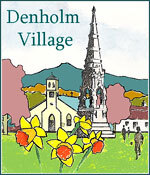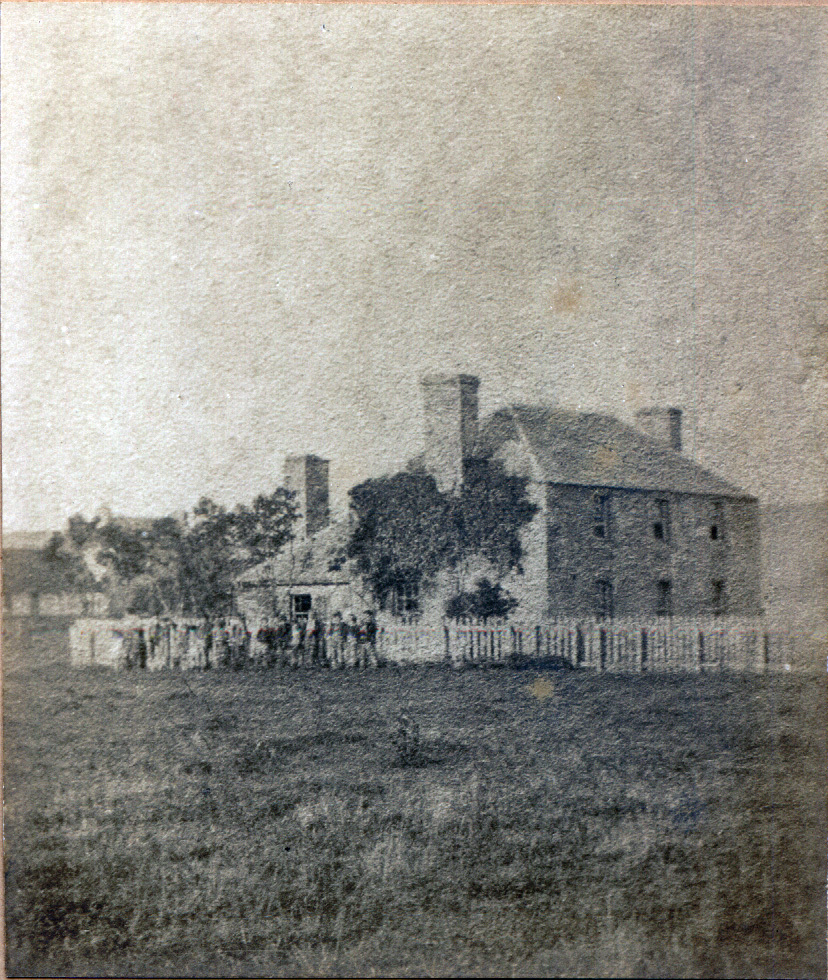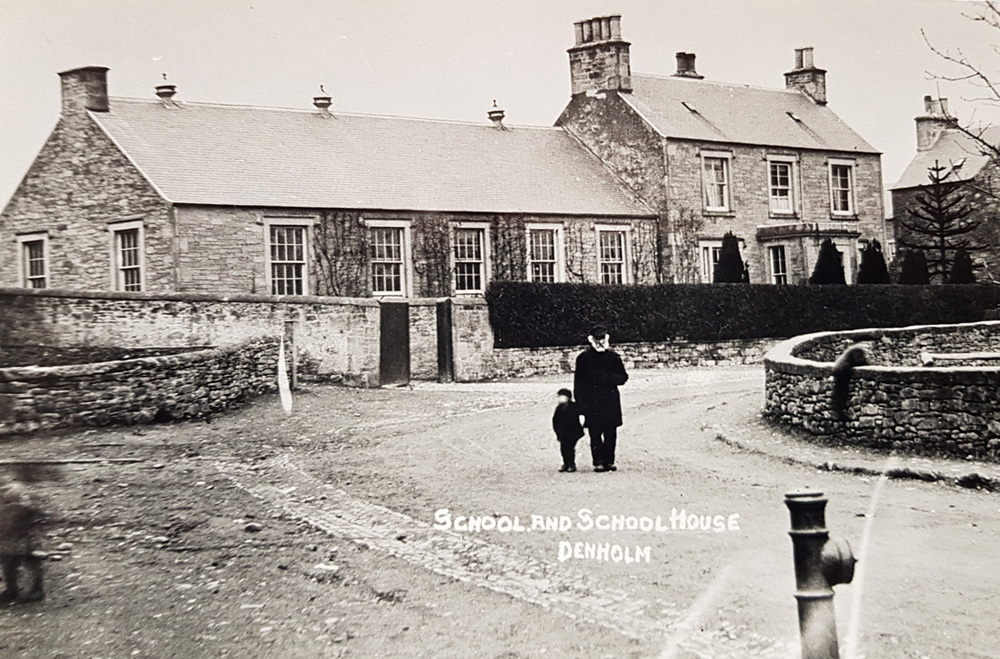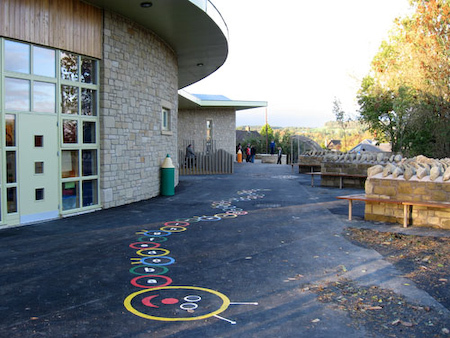from the beginning..
The Parish School at Cavers
Until the late 17th century the parish school was at Cavers Village, also known as Cavers Townhead or Muckle Cavers. As Denholm grew and Cavers declined, the school was moved to Little Cavers about halfway between the two villages. For three successive generations the family of Olivers were schoolmasters at Cavers. The parish schools were under the jurisdiction of the Presbytery and the local Kirk Session. Regular inspections would be made by representatives of the Church to make Hours sufficient were religious knowledge was being taught.
Hours were very long, sometimes from 7 a.m. to 5 p.m. or dusk, and not until the mid 19th century did they begin to close on Saturdays. Children often had to walk considerable distances to get there. The three miles between Denholm and Cavers would not have been untypical. If the weather was wet they had no means of getting dry for the rest of the day and absences were common in bad weather. In the summer most of the children went barefoot.
The Auld Schule on the Green
In 1802, to the great joy of the people in Denholm, the parish school was moved into the village. The "Auld Schule" was built on the Green where the monument is today. Here it remained for 56 years.
In 1839 the salary of the schoolmaster in Denholm is recorded as £30 per annum and the total fees paid as £25 (New Statistical Account of Scotland vol. 3) Fees were payable by the quarter of thirteen weeks and were:
2s for English.
2s 6d for English and Writing,
3s for English, Writing and Arithmetic,
5s for advanced subjects (Grammar, Geography, Book-keeping. Algebra etc,).
In 1858, the year that the Auld Schule was demolished, an article entitled ‘The School and its teacher’appeared in a periodical called the ‘Bouquet’. It was written by Alexander Murray, younger brother of J.A.H., later Sir James Murry the lexicographer.
He describes the school as a rectangular building with a blue door that grated on rickety hinges and large windows with white shutters, Ivy and honeysuckle climbed up the gable end around the windows. In front of the building was the school playground. Despite the large windows the schoolroom seemed "designed for undermining the constitutions of the young who spent the principal portion of the day within it. The roof was low even for a dwelling house and the ventilation most inefficient." The Dominey" sat in front "inhaling the united breaths of the whole."
The school took children from infancy until they were big enough to bear part in the toil and broil of life." The younger children who were still learning the ABC from a primer were drilled individually by the teacher. The older ones were divided into classes, sometimes taught by the teacher and sometimes learning by themselves.
On first entering the schoolroom a visitor would be struck by the noise and seeming confusion. "The noise is indeed not very pleasant. The wonder is that business can be contracted properly in the midst of so much din." But the writer goes on to say that the pupils were in fact industrious and well disciplined. The constant noise came from several different classes learning aloud at the same time. One might be reciting the ABC and another chanting a metrical psalm while the arithmetic class did calculations out loud and the geography class lunged at a map with wooden pointers.
Even to Alexander Murray these teaching methods seemed old fashioned. But he goes on to say that the "village school puts out better writers, better arithmeticians and better geographers than many which seem to be conducted on a better principle. This he attributes to the excellence of the teacher who had a decided knack of instilling knowledge, and all who were willing to learn made rapid progress under his tuition.
The Maister
This teacher, "a prodigy of a man," was George Scott, usually known as the "Maister." Six foot tall and nick-named "lang-legs," he lived over the school. He was "a real specimen of the old school of parish teachers and also held the offices of Poor Inspector and Session Clerk.
As a man he was “generally respected”. He had "a good natured laugh" and "no pretensions to be more refined in manners and language than those among whom he moved." Murray praises the Maister’s “plain and simple dress” and his use of the local dialect, the ‘Border Doric.” This he much preferred to the "stiff starched collars and desperate attempts at English” of ‘the teachers of nowadays.’
He approved of Scott's own plainness of speech and manners but criticises the ‘bad mode of reading and pronouncing possessed by all his scholars. The fluent English was badly faltered and strangely vernacularised when it passed through his voice into their ears." He also regrets that Scott "took no pains to teach his pupils civility or politeness, either to himself or to any other person. This was perhaps his greatest drawback, and its effect on the juvenile portion of the village population was but too apparent."
Alexander Murray was all of 18 years of age when he wrote this!
The School on Sunnyside
In 1858 a fine new school was built on Sunnyside with a schoolhouse adjoining.
In 1866 the average attendance recorded as 145.
The Education Act of 1872 made schooling compulsory from five to thirteen and set up a rating system to pay for schools under local boards. Thus attendance at the village school became free and the governing body was no longer the Kirk Session at Cavers but a separate school board.
The school attendance officer or "whipper in" was appointed to enforce regular attendance. For many years this was William Ramsay, the preacher and colporteur.
By the end of the century the school roll had dropped to about 100 as the population of the village had fallen. But by that time there was a headmaster, two teachers and two assistant teachers. The assistant teachers were apprentices who still had to go to training college. There were three classes, Senior, Junior and Infants.
There were three doors and a large high ceilinged room, partitioned into three. Despite two fireplaces and a large iron stove, it was very cold in the winter. The tawse was often used. The school had its own garden at the top of the playground and each boy had his own plot. At that time girls were given cookery lessons by Mrs Kerr, a housewife, in her home near the school but later, in the 20th century a cookery room was built on behind the main schoolroom. This was later used as the County Library and is now the Small Hall.
From the 1930's to the 1950's, under headmaster Donald McLeod, two acres of ground behind the school was laid out as a garden where pupils learned practical horticulture and agriculture. There were also hen runs and hen houses.
The school building is now the Village Hall.
The School Until 2006
The third school was built on this land [mentioned above] and opened in 1965 to include a Junior Secondary with over 200 pupils.
Since 1971 it has been the Denholm Primary School. The building on Sunnyside was used as the school canteen until 1983 when it was adapted to become the present Village Hall.
On Wednesday 19th April 2006 the Primary School suffered major damage as a result of a fire which started in the school's playgroup.
The fire quickly spread to the gym hall, then continued its journey of devastation to three of classrooms before the fire brigade were able to bring it to a halt.
The rest of the school suffered from smoke and heat damage. Due to the presence of asbestos all remaining resources were destroyed as a precaution.
The local education authority worked quickly to relocate the school to St Margaret's School in Hawick where we remained until the new school was ready for occupation in the Autumn of 2008.
The present Denholm Primary School
The present Denholm Primary School was opened in October 2008.
Project manager Jeremy Snodgrass said: "During the design process, we consulted with staff, pupils and parents to meet the needs of the whole community.
"The school has been designed with interesting curved walls and an attractive blend of materials to complement the new school's setting in the heart of Denholm."



